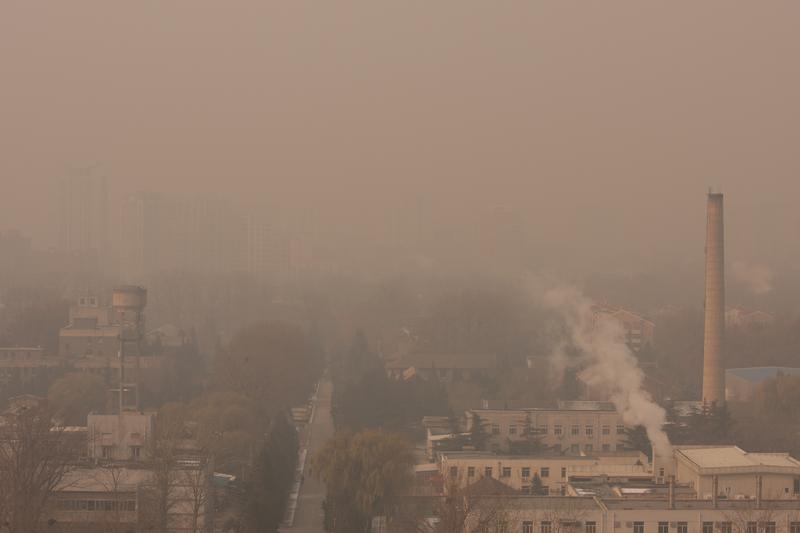Coal the worst culprit of air pollution in the area surrounding Beijing

Coal-fired power plants are the largest source of air pollution in China’s worst affected regions, according to a study into the causes of air pollution and smog in the country’s biggest cities.
The research, undertaken by University of Leeds researchers with Greenpeace China, found that in the Jingjinji area (Beijing, Tianjin and Heibei regions) coal plants emit high levels of gases and particles that combine in complex ways to make up air pollution.
The results mean coal plants in the region may have to be curtailed and new plants banned if China is to meet it’s new air pollution standards.
In the Jingjinji , coal generation is responsible for 9% of primary particles, such as soot (hydrocarbons), that combine to make up a fine particulate – known as PM2.5, which are tiny particles of matter 2.5 or fewer micrometres wide.
The industry also emits 69% of the total sulphur dioxide (SO2) and 47% of nitrogen oxides (NOx), which form fine aerosols in the atmosphere. These secondary sources of pollution can either condense onto the primary source, such as soot, or react to form brand-new particles in the atmosphere, Dominick Spracklen, an atmospheric pollution researcher for at the University of Leeds, told Unearthed.
“It’s a complicated mix, and both are important,” he added.
SO2 and NOx make up around 50 to 60% of the total concentration of PM2.5 in the Jingjinji area, according to the study.
The combined effect of the fine particulate and aerosols makes coal the most polluting sector in the Jingjinji.
The region’s production of steel, cement and bricks are the other major industrial sources of PM2.5 in the area, releasing almost half of primary fine particulates, and 12% of SO2 and 17% of NOx.
Transport is also a significant source of NOx – 45% – in Beijing making it the second most polluting sector in the capital, but it is not does not make as substantial a contribution in Tianjin and Hebei.
The analysis suggests that meeting China’s air quality standards will require significant cuts in coal use.
In September, China published long-awaited state air pollution plan, which set out targets that the Jingjinji area should reduce its PM2.5 concentration by 25% by 2017. A municipal plan for Beijing also released that month aims for the annual concentration of PM2.5 in Beijing not to exceed 60 micrograms per cubic metre.
If the Jingjinji region is to meet China’s air quality standard of 35 micrograms of PM2.5 per cubic meter new coal plants would have to be banned and existing burning curtailed.

